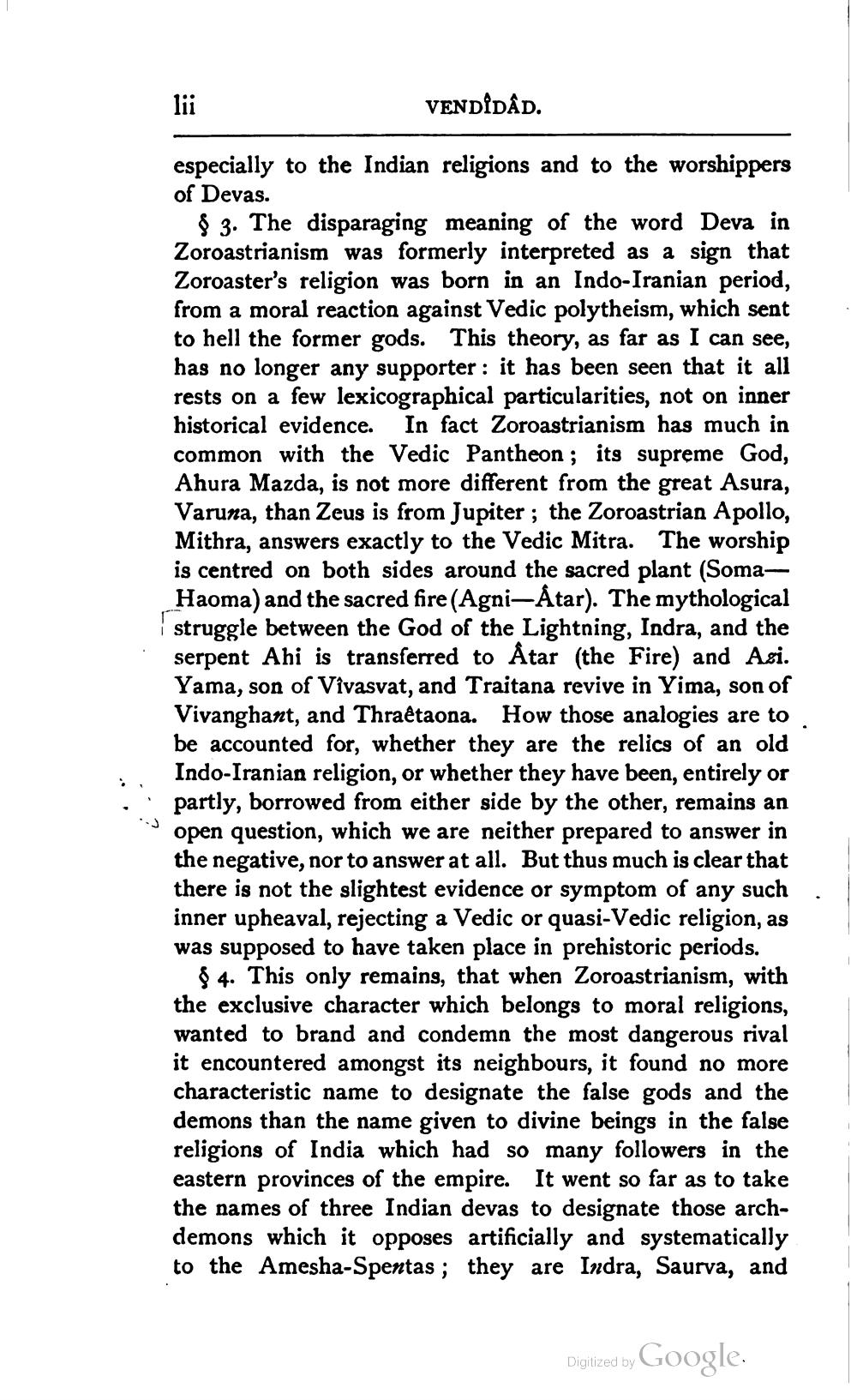________________
VENDIDAD.
especially to the Indian religions and to the worshippers of Devas.
$ 3. The disparaging meaning of the word Deva in Zoroastrianism was formerly interpreted as a sign that Zoroaster's religion was born in an Indo-Iranian period, from a moral reaction against Vedic polytheism, which sent to hell the former gods. This theory, as far as I can see, has no longer any supporter : it has been seen that it all rests on a few lexicographical particularities, not on inner historical evidence. In fact Zoroastrianism has much in common with the Vedic Pantheon; its supreme God, Ahura Mazda, is not more different from the great Asura, Varuna, than Zeus is from Jupiter ; the Zoroastrian Apollo, Mithra, answers exactly to the Vedic Mitra. The worship is centred on both sides around the sacred plant (SomaHaoma) and the sacred fire (Agni-Atar). The mythological struggle between the God of the Lightning, Indra, and the serpent Ahi is transferred to Åtar (the Fire) and Asi. Yama, son of Vivasvat, and Traitana revive in Yima, son of Vivanghant, and Thraêtaona. How those analogies are to be accounted for, whether they are the relics of an old
Indo-Iranian religion, or whether they have been, entirely or ' partly, borrowed from either side by the other, remains an
open question, which we are neither prepared to answer in the negative, nor to answer at all. But thus much is clear that there is not the slightest evidence or symptom of any such inner upheaval, rejecting a Vedic or quasi-Vedic religion, as was supposed to have taken place in prehistoric periods.
$ 4. This only remains, that when Zoroastrianism, with the exclusive character which belongs to moral religions, wanted to brand and condemn the most dangerous rival it encountered amongst its neighbours, it found no more characteristic name to designate the false gods and the demons than the name given to divine beings in the false religions of India which had so many followers in the eastern provinces of the empire. It went so far as to take the names of three Indian devas to designate those archdemons which it opposes artificially and systematically to the Amesha-Spentas; they are Indra, Saurva, and
Digitized by
Digitized by Google.




